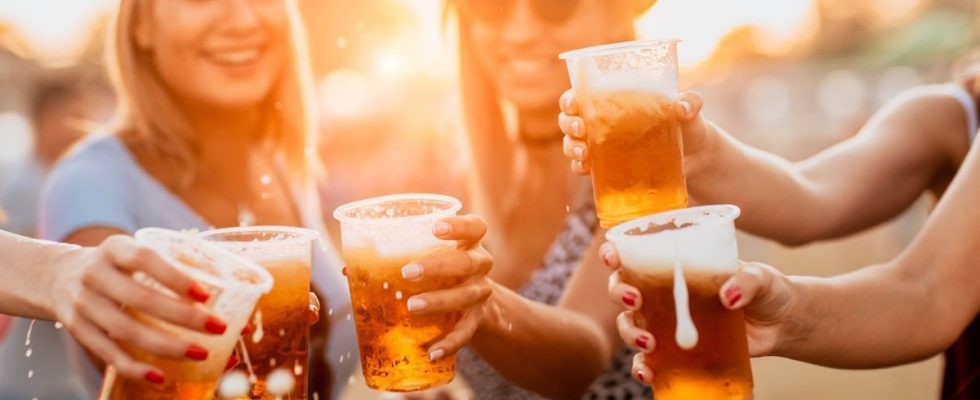Published on
Updated
Reading 3 mins.
When summer is in full swing, it’s not just adults who like to toast to sunny days and conviviality. Young people also celebrate the holidays, a glass in hand, without it being filled with beer or another alcohol. If “binge drinking” is a phenomenon that has not disappeared among young people, the intoxicating substance is far from consensus. We take stock.
Teens drink alcohol later and later
In his last observatory of drugs and addictive tendencies, which provided an assessment of the last twenty years, the OFDT highlighted the increase in the proportion of young people aged 17 who had never drunk alcohol. In 2002, they were 4.4%. In 2017, they were 14.4%. A trend confirmed when we question these young people, on the occasion of their defense and citizenship day, if they have drunk alcohol the previous month: in 2000, they were 20.8% to answer yes, against 33.6 % 17 years later. Young people are gradually redefining their relationship with alcohol for several reasons. There are first of all religious, philosophical and cultural motivations, explains the OFDT, knowing that “young people frequenting openly abstinent adolescents tend to adopt the same behavior as their peers”; a snowball effect thus makes it possible to understand this evolution in practices. Furthermore, awareness of the consumption of alcohol presenting a health hazard is not only a reality among parents. In the same way, some teenagers witness the vigilance of their elders regarding their alcohol intake and follow the same path. Drinking alcohol no longer becomes so normal. Logically, the first glass of alcohol is thus drunk increasingly later, i.e. at 14.3 years in 2017 compared to 13.3 years in 2000.
Binge drinking is not a generalized phenomenon
We have long talked about this tendency to get drunk to excess during a single evening, labeling this mode of consumption as “binge drinking”, an English expression borrowing the idea of excessive viewing of television series. To say that this “fashion” has disappeared is wrong. There is still a part of the adolescent population that engages in this type of practice. In 2017, 43.9% of teenagers had taken part in it during the month preceding the survey. But if this proportion may seem impressive, it should be noted that this phenomenon is observed especially among regular drinkers. In 2017, 95.3% of them said they had taken part in excessive alcohol consumption during the previous month, while occasional drinkers were only 40.7%.
Alcohol consumption at a young age is not observed more in working-class families
When it comes to young people and alcohol, there is one truth: girls are less likely to drink it. According to the OFDT, 15.4% of them have never had a drop of alcohol when the boys are only 13.4% (at the age of 17). However, there is a cliché that has a harder life and that would like the consumption of alcohol in adolescence to occur more in the working classes. It’s actually quite the opposite! 27.5% of young people who have never drunk alcohol belong to so-called underprivileged backgrounds. Conversely, they are only 5.5% to have never shared this experience in the “very privileged” classes.
Similarly, the higher one climbs the social ladder, the more one sees an increase in the number of teenagers engaging in repeated “binge drinking”: this is the case for only 13.6% of teenagers. from disadvantaged backgrounds against 18% for the privileged and 17.5% very privileged. “Adolescents from wealthy backgrounds tend to have greater sociability and generally have more financial resources limiting the relative cost of their alcohol consumption,” explains the OFDT.
